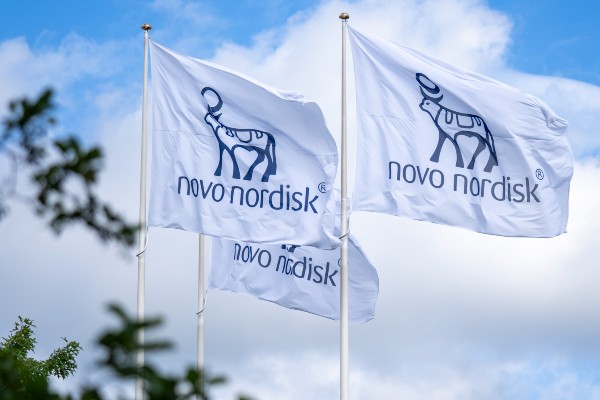
Europe's largest company by market capitalisation is set to release their earnings report for the second quarter on August 7th.
Can Novo Nordisk (NOVO B), accounting for 34% of the global diabetes market, including roughly half of both the $15 billion insulin therapy market and the nearly $40 billion GLP-1 market, keep up with the demand for its diabetes and obesity products? The Danish pharmaceutical giant's first priority is indeed to increase supply of its GLP-1 therapies, and we think progress with increasing supply of lower, starter doses in the US indicates they could be prepared to continue serving these patients at higher doses later in the year.
While the demand for Novo Nordisk's diabetes and obesity products keeps increasing, we expect Novo and competitor Eli Lilly to continue to face pricing pressure in the GLP-1 market as volumes increase, even prior to the entry of a third firm. Despite the fact that Novo and Lilly are the only significant players in the GLP-1 market, Novo is facing pricing pressure in both diabetes and obesity for these products, as the firm works to increase coverage by insurers.
Fair Value Estimate for Novo Nordisk
With its 2-star rating, we believe Novo Nordisk's stock is overvalued and trading at a 45% premium compared to its Fair Value Estimate of 600 DKK.
While we continue to see Novo Nordisk as a wide-moat firm, with strong intangible assets surrounding its cardiometabolic business, we think the high obesity drug demand and scarcity of supply have driven share prices above their intrinsic value. We assume that Novo Nordisk is capable of growing GLP-1 sales across indications from roughly $24 billion in 2023 to nearly $75 billion by 2031, prior to the patent expiration for semaglutide, the molecule in Ozempic and Wegovy.
We think current share prices do not properly account for expected price declines and competition, let alone the risk of patients discontinuing therapy due to
tolerability, cost, or long-term safety issues.
Key Morningstar Metrics for Novo Nordisk
• Fair Value Estimate: DKK 600.00 •
• Morningstar Rating: ★★
• Economic Moat: Wide
• Morningstar Uncertainty Rating: High
Economic Moat Rating
Novo Nordisk's strong intangible assets in diabetes and related cardiometabolic diseases like obesity give the firm a wide economic moat that will shield profitability for the long run.
A focused research and development strategy allows the firm to repeatedly extend patent protection through innovation. Efficient manufacturing techniques and economies of scale have allowed Novo's insulin business to provide strong global profitability, qualities that it shares with the only two other global insulin players, Sanofi and Eli Lilly.
However, we don't think Novo's cost advantages are strong enough to stand as a moat source for the entire firm, given that Novo’s foundation has rapidly shifted from insulin (20% of 2023 sales) to GLP-1 therapies (70% of 2023 sales). If peptide-based GLP-1 therapies continue to remain the standard of care for the next 10 years, we expect Novo could hold a minor cost advantage in this market as well.
However, the massive potential of GLP-1 therapies beyond diabetes — particularly in obesity — has drawn multiple competitors, several of which could launch with easier-to-manufacture pill treatments.
Read more about Novo Nordisk's Economic Moat
Novo Nordisk Bulls Say
Novo's new obesity therapy Wegovy is significantly expanding the obesity treatment market given its strong efficacy and is poised to remain a key drug in the market until patent expiration in 2032.
With a solid portfolio of GLP-1 products, including injectable Ozempic and oral Rybelsus, Novo is well positioned to defend its formidable diabetes market share.
Semaglutide is also being studied in areas including liver disease (NASH) and Alzheimer's, and Novo could achieve a strong share in these nascent markets.
Novo Nordisk Bears Say
Tresiba's strong profile in the long-acting insulin market hasn't been enough to defend it from U.S. pricing pressure due to competition from Sanofi and Lilly, and biosimilar insulins have weighed on category pricing since 2017.
Novo's Victoza and Ozempic have made GLP-1 a key part of the firm's diabetes growth, but oral GLP-1 Rybelsus has had slower uptake, and Lilly's newly approved Mounjaro provides strong competition.
Novo's obesity drug Wegovy had a slow launch due to supply constraints, and Zepbound, which is Lilly's obesity drug, has a potentially superior profile.
This article was compiled by Johanna Englundh































